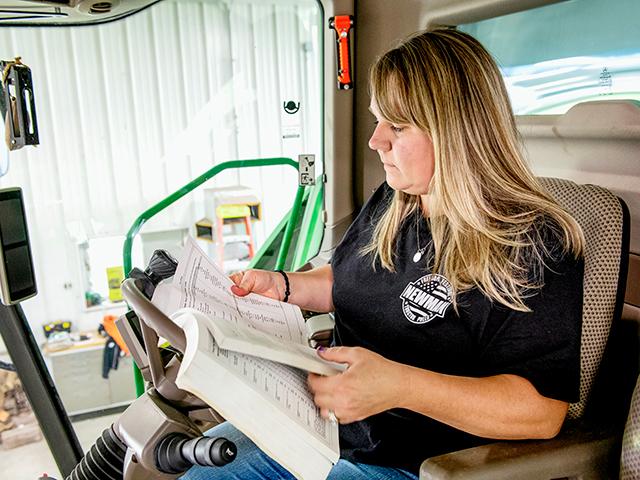Todd's Take
An Early Theme Emerges for 2020
I had the pleasure of giving market talks this week with DTN Senior Meteorologist Bryce Anderson at the National Farm Machinery Show in Louisville, Kentucky. As usual, the audience was full of friendly people who brought good questions and genuine interest for where grain prices will land in the year ahead.
As I listened to Anderson's presentation, the following points seemed clear: Saturated soils and swollen rivers throughout much of the Corn Belt and snow in the Northern Plains are raising concerns about how planting will go in the spring of 2020.
One of Anderson's slides of the February to April forecast from the National Oceanic and Atmospheric Administration (NOAA) showed below average temperatures for the northern Corn Belt and above normal precipitation for the northern and Eastern Corn Belts.
It is too early to tell if the 90-day forecast will verify, but as Anderson explained, even normal spring weather in 2020 could be problematic for many areas that are already too wet.
Having just endured 2019 and the worst planting conditions in recent history, we can't underestimate the role this year's planting season will play in setting the tone for corn and soybean prices in 2020.
In 2019, USDA's planting total for corn, soybeans and wheat came to 211.0 million acres (ma), down 14.9 ma from the previous year. If we could expect all the production to bounce back in 2020, and wheat acres stayed close to their 2019 total of 45.2 ma, that would leave 180.7 ma to share between corn and soybeans.
P[L1] D[0x0] M[300x250] OOP[F] ADUNIT[] T[]
Sketching out early numbers for a new season is always a tricky exercise, but my best early U.S. demand estimates for 2020-21 peg corn at 14.2 billion bushels (bb) and soybeans at 4.2 bb. Using something close to trend-line yields, the U.S. has enough corn demand to support 89.0 million planted acres and soybean demand could support 85.0 ma, a total of 174.0 ma for the two. Anything more than that will likely add to the carry for one or both crops.
This is where spring weather comes in. Given the hangover of saturated soil conditions, it is difficult to imagine all 180.7 ma getting planted in 2020, even if spring weather was generally favorable.
So the question becomes, just how much of the available total will be able to be planted to corn and soybeans in 2020? Here in mid-February, it seems impossible to know the answer with any confidence, but this could be the big key for crop prices in 2020.
Anecdotally, my early conversations with producers from different parts of the Corn Belt suggest that corn and soybeans will not split the difference as they did in 2018 -- corn is likely to be the favored crop again in 2020.
USDA's 96th Outlook Forum takes place on Feb. 20-21 in Arlington, Virginia, this year and it will be interesting to see USDA's early planting estimates and the agency's view of how much production it expects to return in 2020.
For now, I am starting with an early total of 92.0 ma for corn and 85.0 ma for soybeans. If true, that would nudge up the corn surplus by roughly 200 million bushels (mb) in 2020-21 and keep the soybean surplus roughly the same as the 425 mb currently estimated for 2019-20.
For grain producers, it's not as important to guess who might have the best planting prediction in February as it is to recognize that right now, there is a lot of uncertainty as to what direction prices will go in 2020, and planting totals will eventually play a big part in steering those prices.
Once we learn more about how spring weather goes, and certainly by the time we get to USDA's Acreage report on June 30, the window of uncertainty will have dramatically narrowed and many of those new-crop sales opportunities Elaine Kub wrote about on Wednesday (2/12/2020) will likely have disappeared.
Click here to read Elaine's column: https://www.dtnpf.com/…
When it comes to planting in 2020, conditions aren't likely to be as difficult as what producers faced in 2019, but this year's spring weather will be interesting to watch.
Todd Hultman can be reached at todd.hultman@dtn.com
Follow him on Twitter @ToddHultman
(BE/BAS)
Copyright 2020 DTN/The Progressive Farmer. All rights reserved.



